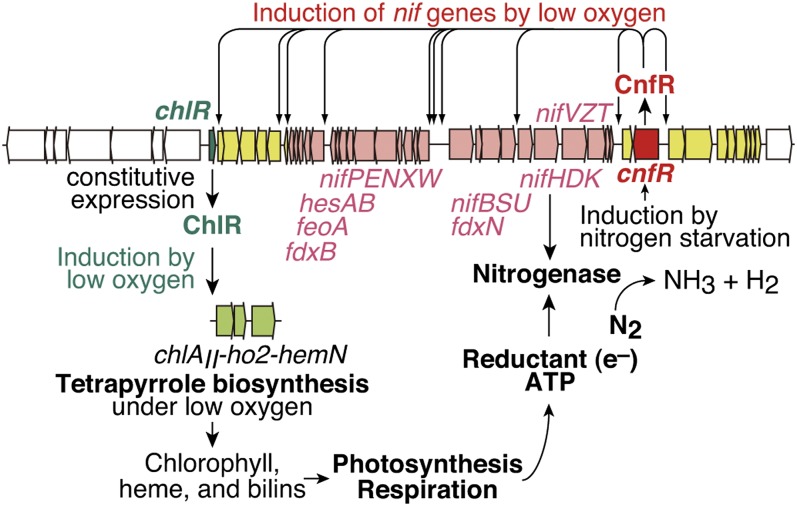Fig. 5.
A working model of ChlR and CnfR in the regulatory circuits of the nif gene cluster in L. boryana. chlR (shown in green) is expressed in a constitutive manner, and the ChlR protein is converted to an active form on exposure to low-oxygen environments, and it activates the expression of the small gene cluster chlAII-ho2-hemN (shown in light green) in the other chromosomal locus. Thus, the three newly synthesized enzymes, ChlAII, HO2, and HemN, bypass the oxygen-dependent reactions in tetrapyrrole biosynthesis to maintain a constant supply of Chl, heme, and bilin pigments even under micro-oxic conditions. These pigments support activities of photosynthesis and respiration to supply reductants and ATP in an efficient manner to drive nitrogenase. cnfR (shown in red) is induced in response to nitrogen starvation, and the CnfR protein is converted to an active form when the oxygen level becomes low enough to drive nitrogenase. Following this, the active form of CnfR activates the transcription of the nif genes (shown in pink) to produce active nitrogenase. Some genes shown in yellow are also regulated by some other regulatory mechanisms while they are still under the control of CnfR.

